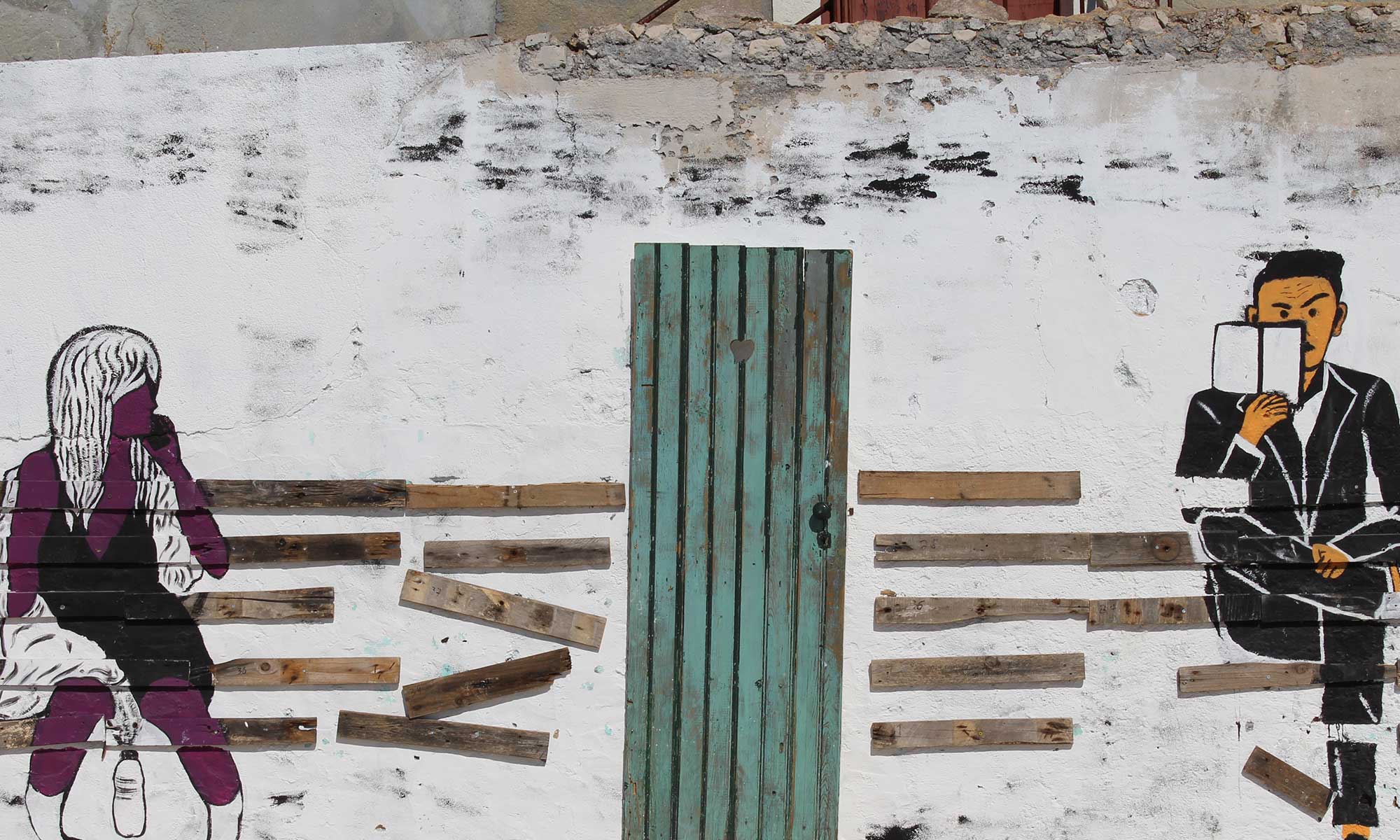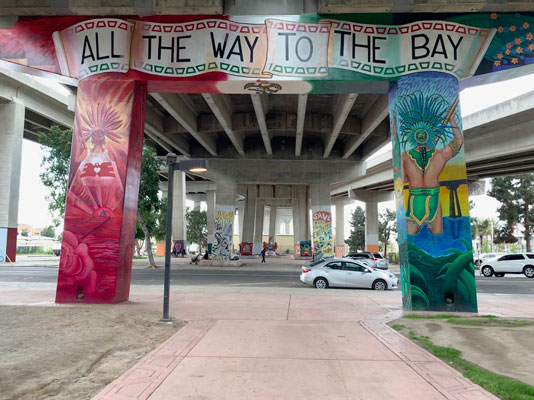By Mario Grill
Identity and Borders
MG: When analyzing Coco or any Chicanx texts there’s the use of multiple languages and how this enriches Chicanx narratives in ways that we might not find in other ethnic American literatures. I’m thinking of how Chicanx narratives construct through and across Spanish and English double-identities. Along with this, do you believe that Chicanx fiction creators have aesthetic representational or political responsibilities (or opportunities) to inform readers from around the globe about the complexity of Chicanx cultural rituals, subjectivities, and experiences. Might this help shape and deepen non-Chicanx readers’ understanding of Latinidad in ways that push against negative and destructively stereotypical mainstream narratives of Chicanxs?
FLA: I think it is up to the individual Chicanx creator to decide how they want to use language to create their respective narrative fictions. Sometimes you see, especially with children’s literature by Latinx authors, where they are like: Okay, here is the story and because Spanish is so much a part of Latinx everyday life, they decide to reconstruct their narrative with codeswitching and interweaving Spanish in with the English. They decide to shape their narratives in and across translingual linguistic acts. However, even here we might see a publisher come down and say: “We want a glossary because want this book to appeal to more than just the Latinx families and kids”. So, they impose certain kinds of, say, discipline on a creator. So yes, there is all sorts of ways that Latinx creators use language to shape their narratives—along with an equal number of ways that these same creators can be constrained when publishers insist that they should create to educate general readers about our language and our culture in non-organic, say, ways to the narrative.
Now, there are authors, especially in the earlier moments of Chicanx literature, but we see it today, where the use of Spanish in the novel is immediately contextualized, so you understand if you are a non-Spanish speaker. A phrase will be mentioned in Spanish and then right next to it will be in English the narrator or the character indirectly defining what that phrase is. It is another form of glossary, but it indicates to readers like me that the ideal audience of the book might not be a Chicanx bilingual or codeswitching reader but maybe one that is dominant English or even to the point where they are monolingual English. So, there are all sorts of variations on this.
Ultimately, it is like such identity categories as Latinx or Chicanx or Blatinx or GuaMex-Irish (me) where I am not going to ever say you should be calling yourself Latinx or Chicanx etc. It is up to you and how you want to self-identify. It is the same thing with literature, or any kind of creation. I am not going to say you need to have Spanish in there because that is a part of our culture and if we do not, we are going to be losing that. If you are a Chicanx author and if you want to write in dominant English or dominant Spanish or codeswitch or do a translingual creation, hey that is up to you.
I will say this, however. We are seeing more and more fiction coming out of the Latinx community of writers where it is the idea that Spanish or codeswitching is somehow a cultural marker as a thing of the past and now it is much more an aesthetic device. It is used as much as a shaping of the story in terms of a comma, syntax, word choice image as you have seen in English in the history of literature forever. Today we see Spanish codeswitching, translingual play as an important organic shaping device in the making of Latinx fiction. Junot Díaz’ Brief Wonderous Life of Oscar Wao and my Long Stories Cut Short are really good examples of the use of translingual play as subtle markers of Latinidad and as powerfully generative shaping devices in terms of their aesthetics.
MG: Wouldn’t the exclusion of the bilingual create a sort of border? This is something you also argue in your recent Latinx Studies: The Key Concepts (2018) which you edited with Christopher Gonzáles. Here you discuss several different themes and areas connected to Latinx Studies and also highlight why Border Theory is so essential in every discussion on Latinx identity and also for Chicanx identity. For instance, you explain that “one key development in Border Theory is how an understanding of the border can lead to greater understanding of identity” (25). So both physical and mental borders in that way create something that established either distance or closure between people, communities, or even your readers. This is when you also mention that Border Theory’s “commitment to issues of the border, now an issue of incredible volatility thanks to the Trump administration’s dogged resolve to build a border wall, the vilification of undocumented Latinxs among rightwing politicos and politicians in the United States, the continued barriers to equal access to resources and due process for Latinxs, and the commitment by the Trump administration to pursue an anti-immigration, ‘America First’ agenda will ensure the vitality of this much-needed area of study.” (27). We see constantly the Trump administration’s villainization of US Latinxs and Mexicans. Do you think cognitive cultural studies can add to the pursuit of tearing down such imaginary and concrete walls and borders?
FLA: That is a pretty layered and complex question. Let me start by saying I never understood why the United States has been so aggressively anti-bilingualism. In our earlier talk I said it is up to the creator and it is but in terms of education of our children and children that become adults, this country, it should be like Québec or Switzerland or other countries around the world where you have two extremely significant languages operating on a daily basis. Why don’t we have Spanish on our cereal boxes alongside English? For everybody school from the very beginning should be, there should be Spanish and English and not just languages thrown at kids like in High School which is a disaster. Why is this? Because of course communication allows for understanding, allows for the movement and contact of people not based on fear but on comfort and from comfort can be learning and from learning can be creation. Yes, it is crazy that we live in a country that does not have every single sign on the street in Spanish and English and on our cereal boxes and in our schools and bilingual teachers trained.
MG: But it does happen in several cities or states?
FLA: Yes and especially in the Southwest, but not as a federal mandate. We should be able to flow between our languages in all national spaces. Not allowing for the growing of bilingualism everywhere and for everyone is like cutting off a limb.
Antibilingualism and specifically anti-Spanish has become part of the ideological trigger-space for “Make America Great Again” propaganda; this idea that somehow English is pure and the civilized language and using Spanish or “that Mexican” is dirty and evil, the latter of course also attaching itself to brown bodies in the US. This all plays in to Trump’s administration which is all about triggers and language and brown bodies and this idea of invading hordes and etc.
So yes, a borderland’s sensibility comes in and through language and culture and history—an understanding that we are connected to our brothers and sisters, our families, our communities, not only through language that reaches across borders, but also through shared histories of conquest and then survivance. There is a lot of communality between someone like me who is Guatemalan, Irish, and Mexican and someone who is who is Puerto Rican, or Cuban, or Dominican. Borderlands as a hemispheric space of coming together in healing along with the recognition of a shared wound: colonization.

